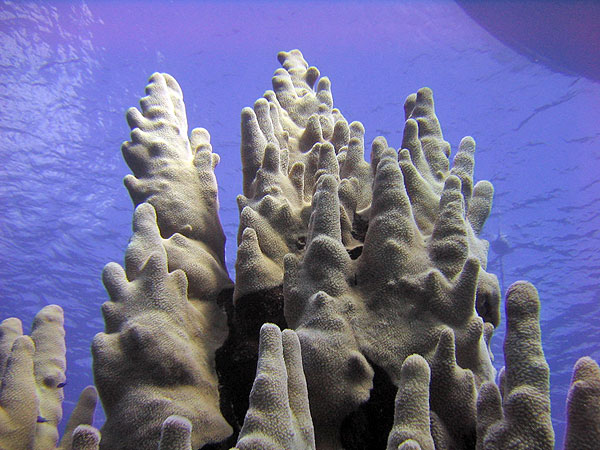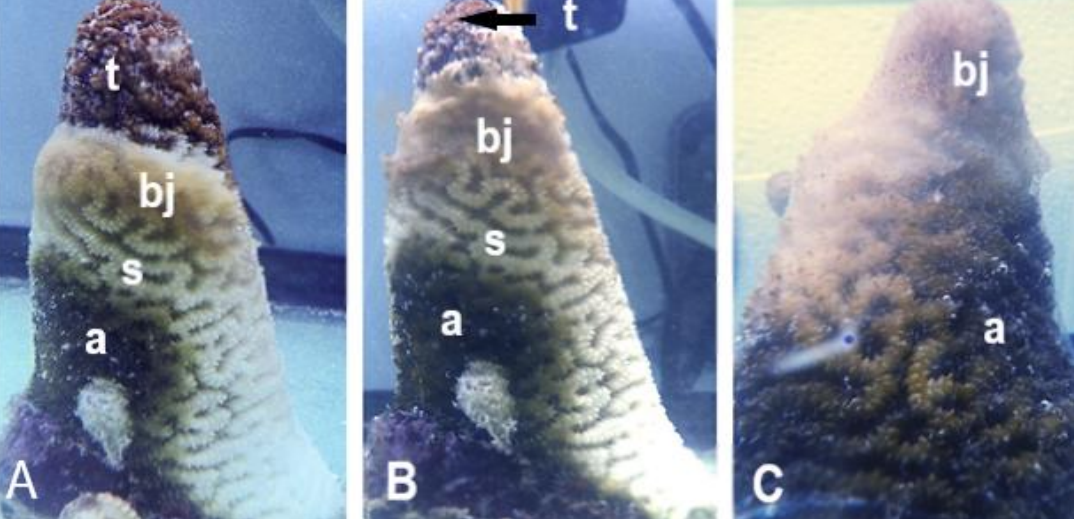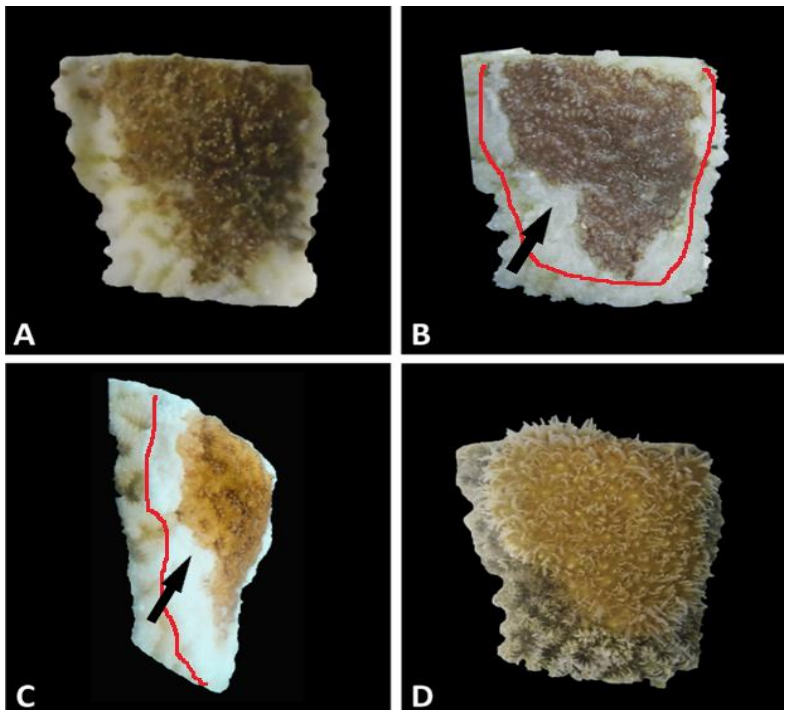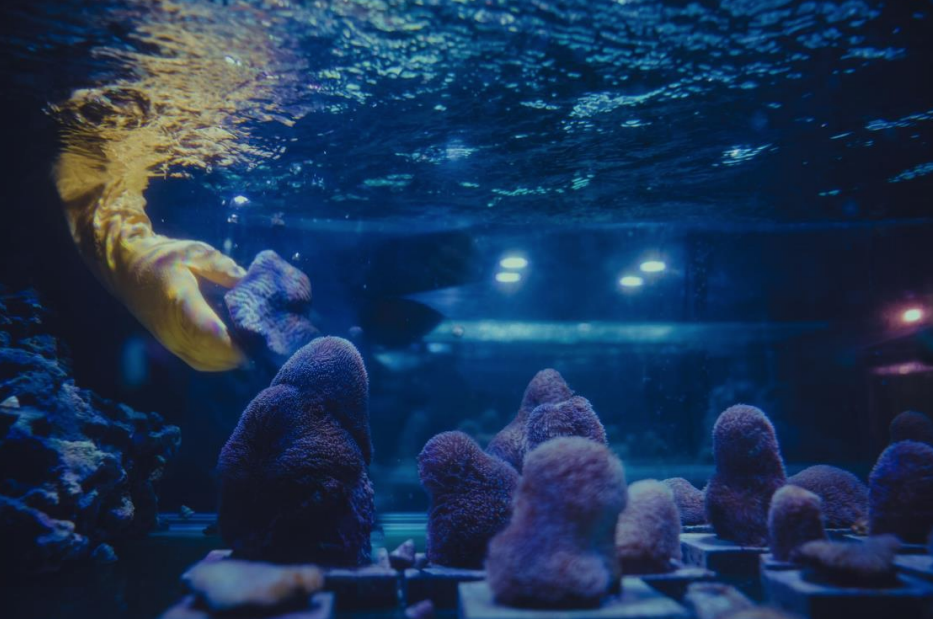An antibiotic treatment has been developed to help cure dying corals on the Florida Reef Tract. Amoxycillin is a medication used to treat a wide variety of bacterial infections in humans, and by mixing it with a base ointment, researchers at NOAA’s National Centres for Coastal Ocean Science have been able to apply it to corals affected by Stony Coral Tissue Loss Disease (SCTLD.)
The treatment is the result of four years of study and numerous attempts to rescue the endangered Pillar Coral, Dendrogyra cylindricus. This monotypic hard coral declined to near extinction in the wild in 2017 due to a triple whammy of bleaching, white plague, and SCTLD, so multi-institutional attempts were made to collect samples, learn how to culture them in the lab, and importantly, how to halt the spread of the disease.
A wide range of proprietary aquarium coral dips was tried first, before turning to the drugs Amoxicillin, Ampicillin, and Gentamicin, with Amoxicillin, found to be the most effective. But the researchers then needed a way to apply the treatment to in-situ corals underwater, and one that wouldn’t instantly wash away, with the answer coming by way of a custom-made dental paste they refer to as Coral Dental paste, or CDP.
By mixing Amoxycillin with the paste it could be applied underwater to bare coral skeletons, where it would slowly release over a three-day period and treat the affected areas. Collaborative lab work then further refined the treatment, resulting in a 97% success rate with specimens treated ex-situ. Directions are as follows:

How to treat Stony Coral Tissue Loss Disease
- Resect the diseased portion of the fragment up to 1cm ahead of the disease margin
- Immerse the fragment in 0.5 mL/L Lugol’s solution (10 % potassium iodide, 5 % iodine) for 15 min followed by an artificial seawater rinse.
- Apply Amoxicillin in CDP (50 mg/mL) to the freshly resected tissue margin
- Perform daily artificial seawater changes (100 %) for two weeks post-treatment to ensure the coral remains asymptomatic
Early intervention, (combined with spot-treatment of diseased areas after initial treatment,) reduced coral fragment mortality to nearly zero, according to NOAA. The treatment was also deemed effective on the Maze Coral, Meandrina meandrites, and it’s hoped to be effective at treating SCTLD on 20 other Caribbean coral species too.

How to treat Brown Jelly Syndrome
10 captive Pillar Coral frags also came down with a secondary infection – the dreaded Brown Jelly Syndrome – something the reef aquarium community knows only too well. The above treatments were tried once more, this time to halt the ciliates in the jelly. Some popular coral dips were again found to be ineffective, but this time Ampicillin was effective, along with catching the spread in time, cutting off the diseased area, and combining with a 15 minute dip in Lugol’s.
1. Remove excess skeleton and diseased tissue margin, as fragment size dictates, and rinse fragment with seawater.
2. Place fragment into an antiseptic solution (0.5 mL/L of Lugol’s) for 15 min and subsequently rinse fragment with seawater.
3. Apply one of the antibiotic treatments: either a. Ampicillin 100 mg/L in seawater (treatments are renewed 100 % daily for at least 7 days) or b. Amoxicillin 40-60 mg/mL in CDP applied to tissue margin with 100 % daily water changes.

Restricted availability
So apart from the triumph in coral conservation we aquarists will no doubt be wondering when we can get our hands on some CoralCure Ointment Base2B to try out on a range of diseases affecting our own coral reef aquariums. Plus the option to apply a cream to an affected area of coral tissue like we would our own skin could open a world of new coral disease treatment opportunities.
But unfortunately, it is only available to professional research groups right now, and the base doesn’t actually include the Amoxicillin Trihydrate either, which still has to be purchased separately and mixed up before being administered. But Ocean Alchemists, the scientific co-creators of the ointment (in association with CoreRx Pharmaceuticals,) are promising a ready-mixed version in the future, and that it may treat a wide variety of other coral diseases as well.



